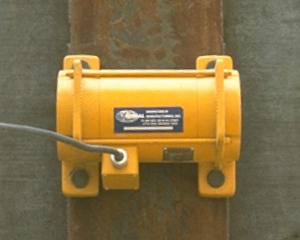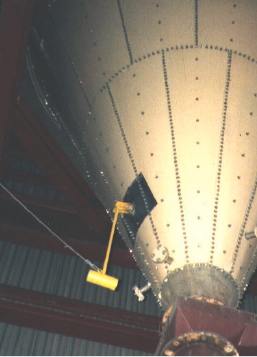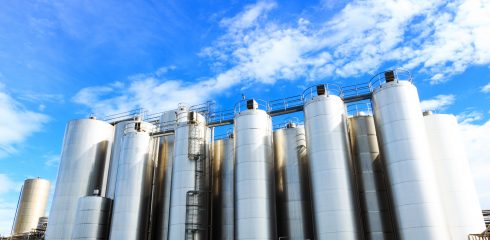
Mechanical flow aids are one of the most frequently used methods in achieving reliable material flow. They operate by applying a physical force, typically through vibrations, to the existing bin in an effort to agitate material at rest within the equipment.
Vibrators impart continuous body forces to the material through the walls of the handling equipment. These devices are often mounted on the hopper sections of silos, or on inclined walls of transfer chutes. Some models deliver low-frequency/high-amplitude forces, much like a hammer blow. Others produce high frequency/low-amplitude forces. In some cases they can be effective in restoring flow when a silo becomes plugged, but in many cases their effect is minimal or even makes flow problems worse.
 Vibrating dischargers are used to overcome a number of flow problems, but they must be used with an understanding of the material and flow pattern in the silo to obtain the expected results. If the size of the discharger is not large enough to overcome ratholing, flow stoppages and other flow problems will occur. Another type of vibrating flow aid is the internal “bridge breaker.” These devices are no more effective than external vibrators and have the disadvantage of internal components that may require maintenance or cleaning to remove foreign objects.
Vibrating dischargers are used to overcome a number of flow problems, but they must be used with an understanding of the material and flow pattern in the silo to obtain the expected results. If the size of the discharger is not large enough to overcome ratholing, flow stoppages and other flow problems will occur. Another type of vibrating flow aid is the internal “bridge breaker.” These devices are no more effective than external vibrators and have the disadvantage of internal components that may require maintenance or cleaning to remove foreign objects.
One of the most effective uses of vibrators is to reduce buildup in chutes and to assist in clean-out of hoppers that must be emptied frequently. For materials that are time sensitive but not pressure sensitive, vibrators may offer an effective way to restart flow after storage at rest. However, vibrators produce high levels of noise and can cause structural damage if it not installed properly.
 Paddles, moving arms, and flexible walls are sometimes effective in overcoming arching and ratholing problems. A number of commercially available feeders employ agitation effectively, and are especially useful when low discharge rates are required with cohesive bulk solids. Mechanical flow aids are just one option in achieving reliable material flow. My next blog will go into detail about pneumatic flow aids and when they should be used.
Paddles, moving arms, and flexible walls are sometimes effective in overcoming arching and ratholing problems. A number of commercially available feeders employ agitation effectively, and are especially useful when low discharge rates are required with cohesive bulk solids. Mechanical flow aids are just one option in achieving reliable material flow. My next blog will go into detail about pneumatic flow aids and when they should be used.






